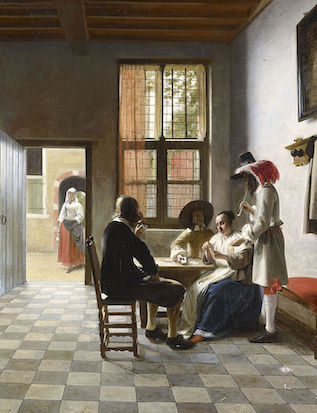You might think that museum curators working with Old Masters would have been impervious to the contemporary cult of celebrity. But it seems to me that, just as many modern movies are designed as vehicles for particular stars, many modern exhibitions are planned on the same principle – the difference being that the stars in question are not Brad Pitt, or whoever, but the likes of Leonardo da Vinci, Michelangelo, Caravaggio, Rembrandt or Vermeer. When it comes to blockbuster museum shows such artists have become, so to speak, the usual suspects. Not so long ago an exhibition devoted to the work of Caravaggio was an eagerly awaited rarity. Now they seem to open all the time: I’ve been to at least three in the last couple of years.
Not that I think this phenomenon is a major cause for concern. If the creation of an all-star cast of Old Masters succeeds in bringing the great art of the past to a new audience – an audience bombarded as never before with competing claims for attention, in this age of information-overload – that is a considerable achievement. And the fact is that museums need people to come to their exhibitions in reasonably large numbers, especially at a time when their funding is squeezed or even under threat.
But there is an undeniable downside to the Old Master cult of celebrity. There is a risk of people getting the idea that museums are places where the main game is sorting the wheat from the chaff, the big names from the also-rans, the stars from the bit players. The result would be a greatly impoverished sense of the true texture of art and its history. I can think of many fascinating and engaging artists who vitally influenced the development of painting...


